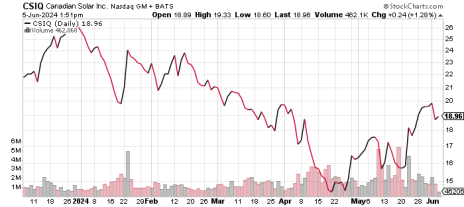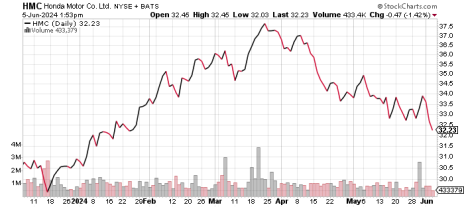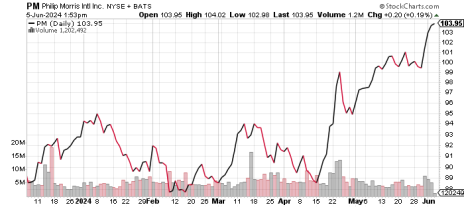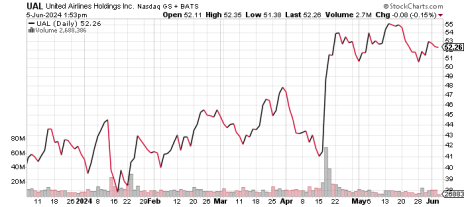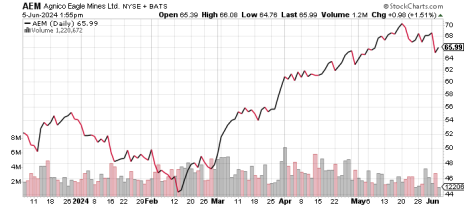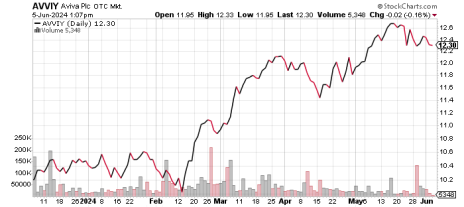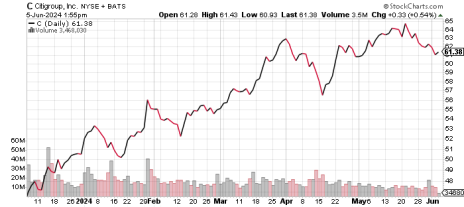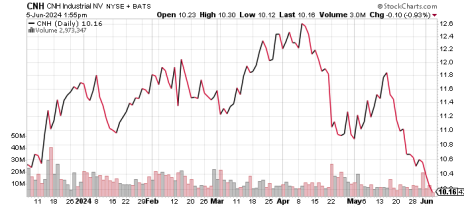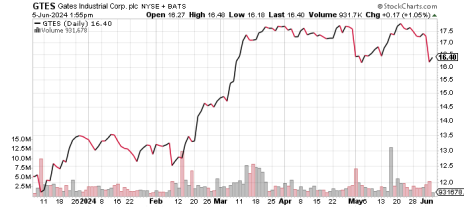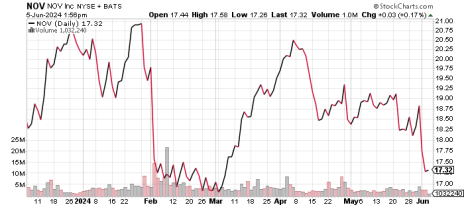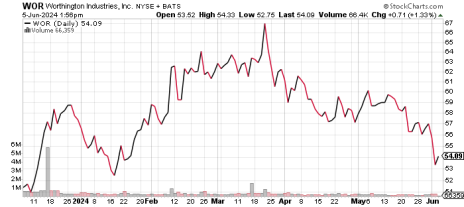Note: I have added a new video Quick Start Guide to Cabot Value Investor, in which I take you on a guided video tour through the various features of this service, including Issues, Updates, & Alerts and where to email me with questions. Newer subscribers, in particular, may find it helpful. You can find the Quick Start Guide on the right rail of the Cabot Value Investor main screen.
Have Solar Stocks Become Too Undervalued?
“The stock is not the company, and the company is not the stock.” -Jeff Bezos
The internet largely credits the Amazon CEO with this famous investment-related utterance, though he surely was not the first to say it.
Bezos said it in reference to Amazon’s dramatic faceplant when the Dot Com bubble burst at the turn of the century – AMZN stock plummeted from 113 a share to 6 a share in less than a year. It wasn’t because something was wrong with the company. On the contrary, Amazon – though not the multi-pronged global behemoth it is today – was doing just fine a little more than half a decade into its existence and having just expanded beyond its humble beginnings as an online bookseller. In fact, it had enough cash on hand to survive the Dot Com crash without requiring outside funding, and within a couple years it was profitable and on its way to becoming one of the great growth companies in American history. But the stock didn’t eclipse its $18 IPO price for good until the second half of 2002 – more than five years after its debut.
These days, few sectors epitomize Bezos’ “stock is not the company” mantra like renewable energy.
Renewable energy has been one of the fastest-growing industries in the world for years. But renewable energy stocks have long been … bleh. The Invesco WilderHill Clean Energy ETF (PBW), a good proxy for clean energy stocks, peaked at 140 per share … in 2007. Its highest closing price since was in February 2021, at roughly 133 a share. Today, it trades at a mere 23 per share. Yuck.
Recently, part of the problem has been wind. The Inflation Reduction Act President Biden signed in 2022 – aimed at reducing America’s greenhouse gas emissions by roughly 40% below 2005 levels by 2030 – was supposed to set in motion a boom in renewable energy projects thanks to sizable tax breaks and other incentives. But new wind projects – for a variety of reasons, namely that wind projects are more specific in their location needs – have thus far badly lagged behind projections, at only a quarter of the average capacity additions (measured in gigawatts) expected by 2027, according to a New York Times story out this week.
Meanwhile, solar projects have more than picked up the slack. The U.S. is expected to add close to 40 gigawatts of solar energy capacity this year – more than double last year’s tally and more than triple what was added in 2022. According to Inflation Reduction Act estimates, solar gigawatts added could reach an average of 60 by 2030 – and solar projects are already in line with initial projections.
And yet, solar energy stocks haven’t exactly set the world on fire (no pun intended) either. The Invesco Solar ETF (TAN), whose holdings include some of the biggest publicly traded solar power companies in the world, with American companies First Solar (FSLR) and Enphase Energy (ENPH) its two largest positions, is down 9% year to date and roughly 43% since President Biden signed the Inflation Reduction Act on August 16, 2022. Mind you, that sharp nosedive in solar stock share prices has come at a time when solar companies around the world are almost universally reporting record sales.
As Bezos said, the company is not the stock.
But if you look at the fraught history of renewable energy stocks, they never stay down too long. In 2013, the PBW was up 50% after bottoming in November of 2012. After another bottom in November of 2016, the PBW shot up 41% in the next 13 months. After the ETF cratered along with the rest of the market during the 2020 Covid crash, it rose more than five-fold – from 24 to 132 – in the ensuing 10 months!
Of course, renewable energy stocks have since pulled back sharply once again. But it appears that another bottom has been put in. The PBW dipped to a closing low of 19.21 on April 19. As of this writing, it’s up to 22.68 – an 18% gain in six weeks. Solar energy stocks, as measured by the TAN, have performed even better, up 23% since an April 19 bottom.
With momentum potentially returning to renewable energy stocks – and given the booming growth in solar projects in the wake of the Inflation Reduction Act – let’s step in here by adding a solar stock to our portfolio. The best candidate I’ve found is not a U.S. company…
New Buy
Canadian Solar (CSIQ)
The U.S. is far from alone in its push to reduce carbon emissions in the face of rampant climate change. The Canadian government signed similar legislation in March 2023, introducing 30% refundable tax credits for investments in clean energy technologies like solar, battery storage and wind. Also, the Canada Infrastructure Bank will invest up to CA$20 billion (U.S.$14.7 billion) into clean energy growth and infrastructure projects.
Canadian Solar (CSIQ) is not only Canada’s largest solar energy company; it’s a global leader in the solar space. And it’s gotten much larger in the last two years, since the Canadian government announced a 50% income tax cut for zero-emission technology manufacturers (which the new 2023 legislation extended by three years). Canadian Solar’s revenues were up 41.5% in 2022, another 2% in 2023 (both record highs), and are on track to tack on another 1.2% this year and a whopping 20.2% in 2025. If it meets those estimates, the company will have gone from $3.5 billion in annual revenues to $8.25 billion in just five years. Earnings per share have more than doubled since 2021, and while they’re expected to take a step back this year, they’re projected to reach new highs of $4.75 per share next year.
And the company is right in the sweet spot for the North American solar boom. It manufactures solar photovoltaic modules and runs large-scale solar projects across Canada, and in 29 other countries, even spinning off a subsidiary – CSI Solar Ltd. – last year that trades on the Shanghai Stock Exchange. The company boasts 61 gigawatt (GW) module capacity, is up to 125GW solar module shipments, and has a project pipeline of 26.3GW. That doesn’t include its battery storage shipments (4.5 GW hours, or GWh) or capacity (20GWh expected by year’s end).
It’s a big company that operates on a global scale, and it’s growing fast. And yet … the stock is a small cap, with a market capitalization of a mere $1.26 billion. It used to be three times as big, trading as high as 63 a share in January 2021. Today, it trades just a hair under 19 a share.
But momentum seems to be returning, as with many other solar stocks. Shares bottomed at 14.4 on (you guessed it) April 19 and are up more than 31% since. But here’s the important part: They trade at just 8x forward earnings, 0.49x book value, and a paltry 0.18x sales. The latter two numbers are the cheapest the stock has ever been, or at least they were six weeks ago before the stock started to rise.
While I considered several other U.S. solar stocks, none of them offered the same combination of growth and value as Canadian Solar. First Solar (FSLR) has the growth (36.2% revenue improvement expected this year, another 24.9% growth next year), but the stock is already trading at all-time highs and at 20x earnings and 8x sales. Other big U.S. names (Enphase Energy, Sunrun, Array Technologies (ARRY), etc.) are both not growing sales this year and are way more overvalued than First Solar.
So, in our ongoing quest to add growth at value prices, Canadian Solar was the best fit. The average price target among eight Wall Street analysts that cover the stock is 25.43, 34% above the current share price. I think that’s conservative. Even if you doubled the CSIQ’s share price, it would be cheaper than almost all the other major publicly traded solar companies in the world. One hundred percent upside seems ambitious, but I think a reasonable target is 28 – where the stock traded last August.
That gives us 47% upside to our price target. Given the company’s (and industry’s) growth and the stock’s own history, that seems like a very reasonable goal. Let’s add the stock to our Growth/Income Portfolio. BUY
Note to new subscribers: You can find additional commentary on past earnings reports and other news on recommended companies in prior editions and weekly updates of the Cabot Value Investor on the Cabot website.
Send questions and comments to chris@cabotwealth.com.
Also, please join me and my colleague Brad Simmerman on our weekly investment podcast, Cabot Street Check. You can find it wherever you get your podcasts, or you can watch us on the Cabot Wealth Network YouTube channel.
This Week’s Portfolio Changes
Canadian Solar (CSIQ) – New Buy with a 28 price target
Last Week’s Portfolio Changes
Comcast (CMCSA) Moved from Hold to Sell
Upcoming Earnings Reports
None
Growth & Income Portfolio
Growth & Income Portfolio stocks are generally higher-quality, larger-cap companies that have fallen out of favor. They usually have some combination of attractive earnings growth and an above-average dividend yield. Risk levels tend to be relatively moderate, with reasonable debt levels and modest share valuations.
| Stock (Symbol) | Date Added | Price Added | 6/5/24 | Capital Gain/Loss | Current Dividend Yield | Price Target | Rating |
| Canadian Solar Inc. (CSIQ) | 6/6/24 | 18.95 | 18.95 | ---% | N/A | 28 | Buy |
| Honda Motor Co. (HMC) | 4/4/24 | 36.34 | 32.24 | -11.28% | 2.60% | 45 | Buy |
| Philip Morris International (PM) | 9/18/23 | 96.96 | 103.76 | 7.00% | 5.00% | 120 | Buy |
| United Airlines (UAL) | 5/2/24 | 50.01 | 52.24 | 4.46% | N/A | 70 | Buy |
Honda Motor Co. (HMC) – After years of declining sales, Honda was rejuvenated in 2023 thanks to hybrids. The Japanese automaker sold 1.3 million cars last year, up 33% from 2022; a quarter of the cars it sold were hybrids, led by its popular CR-V sport utility vehicle (SUV) and Accord mid-size sedan. The CR-V was the best-selling hybrid in the U.S. last year, with 197,317 units sold. The Accord wasn’t far behind, with 96,323 sold. All told, Honda’s hybrid sales nearly tripled in 2023, to 294,000 units.
So, Honda is making the full pivot to hybrids, with the Civic soon to become the latest addition to its hybrid fleet. Investors have started gravitating more to the companies that sell them. Invariably, those are well-established, big-name car companies made famous by many decades of selling internal combustion engine vehicles; most aren’t ready to fully abandon their roots but want to tap into the surging national (and global) appetite for electric, so they instead are turning to hybrids as a compromise. As a result, these once-stodgy car companies are tapping into new revenue streams, and their share prices are surging accordingly.
Among the hybrid-rejuvenated, brand-name automakers, Honda offers the best value.
While there was no major news with Honda the company this past week, there was some good news: Morgan Stanley hiked its price targets on HMC and fellow Japanese automaker Toyota Motors (TM), but highlighted Honda as its top pick, saying it liked the company’s ever-expanding hybrid car model options and improving supply. It also singled out Honda’s motorcycle division, which has improving margins thanks to reduced costs. Meanwhile, the stock remains dirt cheap at 7.7x forward earnings and with a price-to-sales ratio of 0.41.
The stock was down another 1.5% this week – though almost all of those losses came today, on no news – and has now fallen more than 14% from its late-March highs above 37. I don’t expect it to stay down much longer: HMC has 39% upside to our 45 price target. BUY
Philip Morris International (PM) – Based in Connecticut, Philip Morris owns the global non-U.S. rights to sell Marlboro cigarettes, the world’s best-selling cigarette brand. Cigarettes comprise about 65% of PMI’s revenues. The balance of its revenues is produced by smoke-free tobacco products. The cigarette franchise produces steady revenues and profits while its smoke-free products are profitable and growing quickly. The upcoming full launch of IQOS products in the United States, a wider launch of the IQOS ILUMA product and the recent $14 billion acquisition of Swedish Match should help drive new growth.
The company is highly profitable, generates strong free cash flow and carries only modestly elevated debt (at about 3.2x EBITDA) which it will whittle lower over the next few years. The share valuation at about 15.1x EBITDA and 16.7x per-share earnings estimates is too low in our view. Primary risks include an acceleration of volume declines and/or deteriorating pricing, higher excise taxes, new regulatory or legal issues, slowing adoption of its new products, and higher marketing costs. A strong U.S. dollar will weigh on reported results. While unlikely, Philip Morris could acquire Altria, thus reuniting the global Marlboro franchise.
There was no company-specific news for Philip Morris this week.
The company is coming off an encouraging earnings report in late April. Adjusted EPS of $1.50 outpaced analyst estimates of $1.41 per share, while revenues improved 11% year over year. There was a clear driver behind the sales growth: Zyn. That’s the company’s nicotine pouch; it sold 131.6 million cans of Zyn in Q1, a whopping 80% improvement from the first quarter a year ago. Zyn’s share of the nicotine pouch market is now up to 74%. Another contributor to Philip Morris’ strong quarter was its heated tobacco device IQOS, which is expected to launch in the U.S. in the second quarter. Global shipments of IQOS grew by 21% to 33.1 billion in the quarter.
PM shares were up nearly 4% to reach a new 52-week high and are now up 17% since the earnings report. Still, the stock has 16% upside to our 120 price target. The 5% dividend yield adds to the appeal. BUY
United Airlines (UAL) – People are flying in planes again in Covid’s aftermath, and no major airline is taking advantage of it quite like United.
United Airlines is the fastest-growing major U.S. airline. The third-largest airline carrier in the world by revenues behind Delta (DAL) and American (AAL), United is expected to grow sales by 7.4% in 2024 – more than its two larger competitors – and that’s with revenues already topping a record $50 billion in 2023 – 19.6% higher than in 2022, which was also a record year. For United, business has not only returned to pre-pandemic levels; it’s better.
Meanwhile, the stock is cheap. It trades at a mere 5x forward earnings estimates, with a price-to-sales ratio of just 0.32 and a price-to-book value of 1.87. The stock peaked at 96 a share in November 2018; it’s currently in the low 50s.
A company that’s making more money than ever before (gross profits reached a record $15.2 billion last year, though earnings were still second to 2019 levels on a per-share basis), and yet its stock trades at barely more than half its peak from five and a half years ago. A true growth-at-value-prices opportunity.
There wasn’t much news related to United Airlines this week, except for a report that it will hire fewer new employees this year than it did last year due to delays in aircraft deliveries from Boeing. The airline will hire 10,000 new employees, fewer than the 13,000 to 15,000 that were expected, and down from 16,000 new employees in 2023. The slower hiring likely won’t have much effect on the company or its share price.
UAL shares were up nearly 2% this week and have 34% upside to our 70 price target. BUY
Buy Low Opportunities Portfolio
Buy Low Opportunities Portfolio stocks include a wide range of value opportunities. These stocks carry higher risk than our Growth & Income stocks yet also offer more potential upside. This group may include stocks across the quality and market cap spectrum, including those with relatively high levels of debt and a less clear earnings outlook. The stocks may not pay a dividend. In all cases, the shares will trade at meaningful discounts to our estimate of fair value.
| Stock (Symbol) | Date Added | Price Added | 6/5/24 | Capital Gain/Loss | Current Dividend Yield | Price Target | Rating |
| Agnico Eagle Mines (AEM) | 3/25/24 | 56.31 | 65.92 | 17.00% | 2.50% | 75 | Buy |
| Aviva (AVVIY) | 3/3/21 | 10.75 | 12.29 | 14.30% | 6.80% | 14 | Buy |
| Citigroup (C) | 11/24/21 | 67.28 | 61.37 | -8.80% | 3.50% | 85 | Buy |
| CNH Industrial (CNH) | 11/30/23 | 10.74 | 10.15 | -5.50% | 4.60% | 15 | Buy |
| Gates Industrial Corp (GTES) | 8/31/22 | 10.72 | 16.42 | 53.20% | N/A | 20 | Buy |
| NOV, Inc (NOV) | 4/25/23 | 18.19 | 17.34 | -4.70% | 1.30% | 25 | Buy |
| Worthington Enterprises (WOR) | 2/6/24 | 57.13 | 54.21 | -5.10% | 1.20% | 73 | Buy |
Agnico Eagle Mines (AEM) is the world’s third-largest and likely the highest-quality and lowest-risk gold mining company. Its strategy of “proven geological potential in premier jurisdictions” appropriately describes its exclusive focus on quality mines in the legally safe countries of Canada, Mexico, Australia and Finland. In the past few years, Agnico has made several in-region acquisitions including Kirkland Lake in 2022 for $11 billion and Yamana Gold’s Canadian assets for $2.6 billion. The plan for the next five years is to fully integrate and improve these operations and grow production in its existing mines.
As the owner of some of the industry’s highest-quality mines, Agnico has production volumes that look steady for years to come. While some of its ten major mines will see tapering output, nearly all of the others will have steady increases, driven by continued investment and exploration. Agnico’s gold reserves are high quality and increased 11% last year, supporting its outlook for at least stable production volumes. In 2023, the company’s production came in at the high end of its guidance range.
Agnico continues to be an efficient operator, with all-in sustaining costs (or AISC) of about $1,200/ounce, which is roughly 12% below the industry average. Helping its economics are the quality of its mines, the close geographic proximity of its Ontario and Quebec mines and the surplus capacity in its Detour Lake facility that will allow for higher throughput with minimal incremental costs.
We see in Agnico a well-managed company that meets/exceeds its production and cost guidance yet has shares that are noticeably undervalued.
There was no company-specific news for Agnico Eagle Mines this week. Gold prices were up marginally after falling from all-time highs above $2,430 an ounce the previous week.
Agnico reported strong first-quarter results in late April, with revenues up 21% and EPS up 33% year over year with gold prices spiking to all-time highs in the quarter. Both figures handily beat analyst estimates. Also, the gold miner ended the quarter with cash and cash equivalents of $524.6 million, up 55%, while total cash from operating activities reached $783.2 million, up from $649.6 million a year ago.
AEM shares were down 3% since our last update and have 14% upside to our 75 price target. As long as gold prices remain elevated, gold stocks are likely to stay in favor. BUY
Aviva, plc (AVVIY), based in London, is a major European company specializing in life insurance, savings and investment management products. Amanda Blanc, hired as CEO in July 2020, is revitalizing Aviva’s core U.K., Ireland and Canada operations following her divestiture of other global businesses. The company now has excess capital which it is returning to shareholders as likely hefty dividends following a sizeable share repurchase program. While activist investor Cevian Capital has closed out its previous 5.2% stake, highly regarded value investor Dodge & Cox now holds a 5.0% stake, providing a valuable imprimatur and as well as ongoing pressure on the company to maintain shareholder-friendly actions.
There was no company-specific news for Aviva this past week.
AVVIY shares were flat this week after falling 3% the previous week upon meeting resistance at 2024 highs above 12.7. A break above that 12.7 level would be bullish, but right now it’s mostly running in place. The stock remains cheap, trading at less than 12x earnings estimates, with a price-to-sales ratio of 0.41 and a price-to-book of 1.43. Shares have 13% upside to our 14 price target. The 6.8% dividend yield adds to our strong total return thus far. BUY
Citigroup (C) – Citi is one of the world’s largest banks, with over $2.4 trillion in assets. The bank’s weak compliance and risk-management culture led to Citi’s disastrous and humiliating experience in the 2009 global financial crisis, which required an enormous government bailout. The successor CEO, Michael Corbat, navigated the bank through the post-crisis period to a position of reasonable stability. Unfinished, though, is the project to restore Citi to a highly profitable banking company, which is the task of new CEO Jane Fraser. Investors have lost hope in Citigroup, creating an impressive bargain.
There was no company-specific news for Citigroup this week.
The bank is coming off a strong first quarter. Revenue came in at $21.1 billion, ahead of $20.4 billion expected. Earnings per share of $1.86 blew away analyst estimates of $1.23. However, EPS was down 27% from last year’s first-quarter tally due to higher expenses and credit costs. Revenue was also down, about 2% year over year, but it was only down compared to a first quarter last year in which the bank sold an overseas business.
The highlight was Citi’s investment banking unit, which saw a 35% revenue bump on the strength of a solid Q1 for the market.
C shares were down marginally this past week but are still up 8% from their mid-April bottom and 19% year to date. From a valuation perspective, the stock is cheap at less than 11x earnings and at 1.5x sales. It has 38% upside to our 85 price target. BUY
CNH Industrial (CNH) – This company is a major producer of agriculture (80% of sales) and construction (20% of sales) equipment and is the #2 ag equipment producer in North America (behind Deere). Its shares have slid from their peak and now trade essentially unchanged over the past 20 years. While investors see an average cyclical company at the cusp of a downturn, with a complicated history and share structure, we see a high-quality and financially strong company that is improving its business prospects and is simplifying itself yet whose shares are trading at a highly discounted price.
There was no company-specific news for CNH Industrial this week.
Last month, the company reported earnings that were a bit mixed.
Both sales (-9.8%) and earnings per share (-5.7%) declined from the same quarter a year ago. However, both figures beat modest estimates, with EPS (33 cents) coming in well ahead of the 26 cents that were estimated.
Broken down by segment, CNH’s Agriculture wing (its largest at $3.37 billion, or 70% of total revenues) saw a 14.1% decline in sales year over year. Construction revenues dipped 10.7% year over year. Financial Services were the lone bright spot, with revenues increasing 24.8% over last year.
Overall, CNH’s cash/cash equivalents dipped to $3.24 billion from $4.32 billion at the end of 2023. Total debt was up a tick, to $27.78 billion. But cash from operating activities improved to $894 million from $701 million.
CNH shares are down sharply since the report, getting an initial bump but giving back about 14% since as Wall Street seems to have decided there was more bad than good in the results. Trading at less than 7x earnings (and just 0.56x sales), CNHI shares have 38% upside to our 14 price target. The 4.6% dividend yield is at least providing a life raft as the stock has taken on water in recent weeks. BUY
Gates Industrial Corp, plc (GTES) – Gates is a specialized producer of industrial drive belts and tubing. While this niche might sound unimpressive, Gates has become a leading global manufacturer by producing premium and innovative products. Its customers depend on heavy-duty vehicles, robots, production and warehouse machines and other equipment to operate without fail, so the belts and hydraulic tubing that power these must be exceptionally reliable. Few buyers would balk at a reasonable price premium on a small-priced part from Gates if it means their million-dollar equipment keeps running. Even in automobiles, which comprise roughly 43% of its revenues, Gates’ belts are nearly industry-standard for their reliability and value. Helping provide revenue stability, over 60% of its sales are for replacements. Gates is well-positioned to prosper in an electric vehicle world, as its average content per EV, which require water pumps and other thermal management components for the battery and inverters, is likely to be considerably higher than its average content per gas-powered vehicle.
The company produces wide EBITDA margins, has a reasonable debt balance and generates considerable free cash flow. The management is high-quality. In 2014, private equity firm Blackstone acquired Gates and significantly improved its product line-up and quality, operating efficiency, culture and financial performance. Gates completed its IPO in 2018. Following several sell-downs, Blackstone has a 27% stake today.
There was no company-specific news for Gates this week.
Like CNH, Gates is coming off some mixed earnings results from earlier this month. The 31-cent EPS results outpaced analyst estimates of 30 cents and was up 20% from the 25 cents it earned in the first quarter a year ago. However, sales of $862.6 million even more narrowly missed analyst estimates and, more importantly, represented a 3.9% decline from the $897.7 million in revenue from Q1 a year ago. The underwhelming results sent GTES tumbling about 8.7% in the immediate aftermath; it recovered all the losses but has since sunk back nearly to post-earnings levels in the mid-16s.
GTES shares have 22% upside to our 20 price target. They trade at less than 12x earnings, 1.24x sales and 1.33x book value, so they remain undervalued by traditional measures. GTES remains our best-performing stock, with a return of 53% in less than two years. BUY
NOV, Inc (NOV) – This high-quality, mid-cap company, formerly named National Oilwell Varco, builds drilling rigs and produces a wide range of gear, aftermarket parts and related services for efficiently drilling and completing wells, producing oil and natural gas, constructing wind towers and kitting drillships. About 64% of its revenues are generated outside of the United States. Its emphasis on proprietary technologies makes it a leader in both hardware, software and digital innovations, while strong economies of scale in manufacturing and distribution as well as research and development further boost its competitive edge. The company’s large installed base helps stabilize its revenues through recurring sales of replacement parts and related services.
We see the consensus view as overly pessimistic, given the company’s strong position in an industry with improving conditions, backed by capable company leadership and a conservative balance sheet.
There was no company-specific news for NOV this past week.
NOV reported earnings in late April that were fairly mixed. Revenues improved 10% year over year (better than the 7.7% top-line growth that was expected), but EPS declined 5.6%, far less than the 15% shortfall that was estimated. However, with operating profits and adjusted EBITDA improved, the company plans to return more cash to shareholders: $1 billion in share repurchases over the next three years (a big amount considering the current market cap is just $7.2 billion), and a 50% hike in the dividend payout starting this month.
NOV shares were down 4% for the week, as crude oil prices dipped to $73 a barrel, their lowest point since February. The stock has 38% upside to our 24 price target. It trades at just 11x forward earnings estimates and 0.78x sales. BUY
Worthington Enterprises (WOR) – Following the split-up of Worthington Industries late last year, “Enterprises” focuses on producing specialized building products (42% of sales) and consumer products (48%). The value of these operations was previously obscured by the market’s perception that the original Worthington Industries was primarily a steel processor. While the market sees an average company with a mix of only partly related products, we see a high-quality company with strong positions in valuable and profitable niches, backed by capable management and a solid balance sheet.
Worthington completed its acquisition of Hexagon Ragasco, a Norwegian company that specializes in lightweight, customizable LPG composite cylinders used for leisure, household and industrial applications, for approximately $98 million. Hexagon Ragasco did $64 million in sales last year – a drop in the bucket compared to Worthington’s $4.9 billion.
Worthington is also selling 49% of its Sustainable Energy Solutions (SES) segment to Hexagon Composites, Hexagon Ragasco’s parent company, for roughly $10 million. Both transactions are relatively minor and haven’t moved the needle much for WOR investors. WOR shares were down 3.7% this past week and have backslid from 67 to 54 since late March. The stock is getting a nice bounce today so perhaps the worst of the selling is over.
WOR shares have 35% upside to our 73 price target. They trade at just 0.56x sales. BUY
The next Cabot Value Investor issue will be published on July 5, 2024.
Copyright © 2024. All rights reserved. Copying or electronic transmission of this information without permission is a violation of copyright law. For the protection of our subscribers, copyright violations will result in immediate termination of all subscriptions without refund. Disclosures: Cabot Wealth Network exists to serve you, our readers. We derive 100% of our revenue, or close to it, from selling subscriptions to our publications. Neither Cabot Wealth Network nor our employees are compensated in any way by the companies whose stocks we recommend or providers of associated financial services. Employees of Cabot Wealth Network may own some of the stocks recommended by our advisory services. Disclaimer: Sources of information are believed to be reliable but they are not guaranteed to be complete or error-free. Recommendations, opinions or suggestions are given with the understanding that subscribers acting on information assume all risks involved. Buy/Sell Recommendations: are made in regular issues, updates, or alerts by email and on the private subscriber website. Subscribers agree to adhere to all terms and conditions which can be found on CabotWealth.com and are subject to change. Violations will result in termination of all subscriptions without refund in addition to any civil and criminal penalties available under the law.
